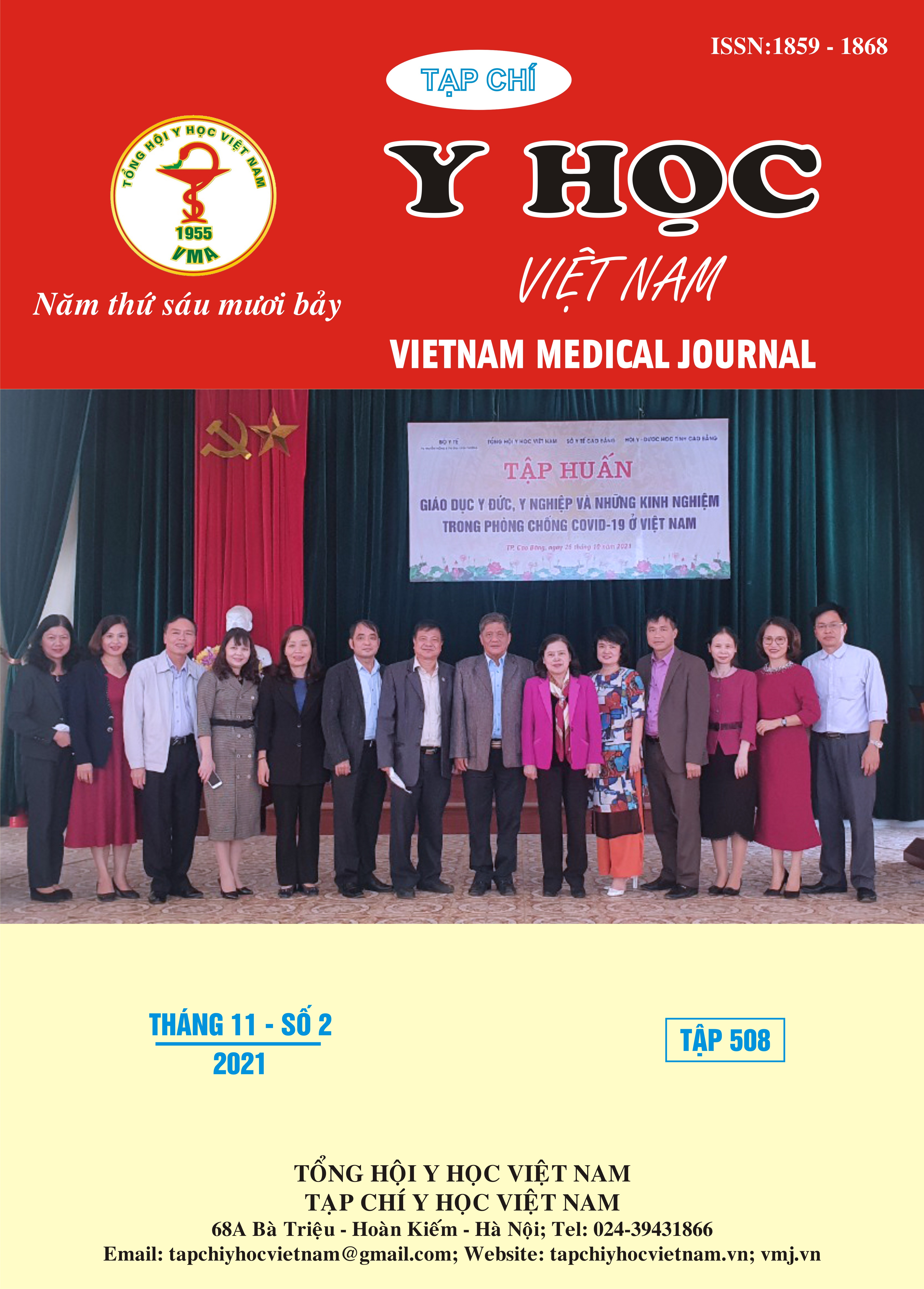THE CLINICAL, SUBCLINICAL CHARACTERISTICS OF ACUTE NOVEL ORGANOPHOSPHORUS PESTICIDES POISONING
Main Article Content
Abstract
Objection: Describe the clinical and subclinical characteristics of acute poisoning of new generation organophosphorus pesticides. Method: Prospective study on 31 patients with acute poisoning of new generation organophosphorus pesticides admitted to Bach Mai Hospital, Poison Control Center from June 2020 to September 2021. The main research parameters such as age, gender, cause of poisoning, history of mental illness; clinical syndromes: muscarin syndrome, nicotine syndrome, central nervous system syndrome, intermediate syndrome; The subclinical indicators: White blood cells, amylase, cholinesterase enzyme activity in the blood were monitored at the time of admission and daily during the hospital stay. Results: Among the 31 studied patients (mean age 45.19 ± 19.2 years old; 96.7% male) it was found that 100% of patients with new generation organophosphate poisoning with a rate muscarin syndrome 93.5%, nicotine 25.8%, central nervous system 6.5% and intermediate syndrome 19.4%. Rate of acute respiratory failure requiring mechanical ventilation due to hypercholinergic syndrome: 32.2%, total dose of atropine: 18.5 ± 28.6 mg. Subclinical features: median cholinesterase activity: 152.0 ± 1443 U/l, in which cholinesterase activity was severely reduced: 93.5%, increased white blood cell count 87.1%, hypokalemia: 58.0%, increased amylase: 38.8%. Hospitalization time 8.6 ± 5.13 days, mortality rate 6.5%. Conclusion: The new generation organophosphates do not have the overwhelming manifestation of acute hypercholinergic syndrome compared with the classical organophosphorus pesticides.
Article Details
Keywords
organophosphorus pesticides, cholinesterase
References
2. Eyer P. The Role of Oximes in the Management of Organophosphorus Pesticide Poisoning. Toxicol Rev. 2003;22(3):165-190.
3. Wadia RS, Bhirud RH, Gulavani AV, Amin RB. Neurological manifestations of three organophosphate poisons. Indian J Med Res. 1977:460-68.
4. Erdman AR. Insecticides. In: Dart RC, ed. Medical Toxicology. 3rd edn. Lippincott Williams & Wilkins; 2004.
5. Phạm Duệ. Nghiên cứu kết hợp PAM và atropin trong điều trị ngộ độc cấp thuốc trừ sâu phospho hữu cơ, 2005, Luận Văn Y Học, 8-10.
6. Yurumez Y, Durukan P, Yavuz Y, et al. Acute Organophosphate Poisoning in University Hospital Emergency Room Patients. Intern Med. 2007; 46(13):965-969.
7. Jalali N, Balali‐Mood M, Jalali I, Shakeri MT. Electrophysiological Changes in Patients with Acute Organophosphorous Pesticide Poisoning. Basic Clin Pharmacol Toxicol. 2011;108(4):251-255.
8. Phạm Duệ. Nhận xét qua 16 bệnh nhân ngộ độc phospho hữu cơ tử vong tại khoa hồi sức cấp cứu A9 Bệnh viện Bạch Mai. Y học thực hành.1991, 14-16
9. Gagarin PY, Rajagopal RL. Clinical profile and outcome of organophosphorus poisoning in a tertiary care centre, a prospective observational study. Int J Med Res Rev. 2020;8(2):148-153.


